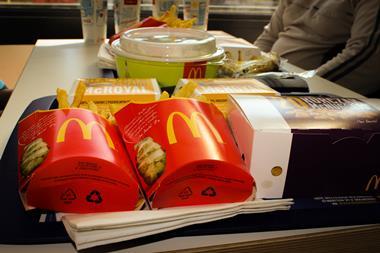Of all the scrutiny into the behaviour of grocery retailers during the cost of living crisis, it was the CMA review into unit pricing that came closest to criticising them outright.
The regulator identified examples of non-compliance among all the 11 major supermarkets and seven variety stores it analysed. The concerns primarily related to three main areas: consistency in the units or measures that are used across products and across retailers; legibility, based on how these were displayed in stores (or not) and whether a customer was able to clearly read them; and finally, promotions, with some retailers not applying unit prices to shelf-edge labels for products on promotion.
These were all issues previously highlighted in the CMA’s 2015 review into supermarket pricing tactics, following a super-complaint by consumer group Which?.
However, for those wishing unit pricing would deliver the political stick to rattle retailers who have failed to change their ways, the breaches appeared to be more as a result of confusion than conspiracy. The CMA went on record to note that in some cases these breaches were “relatively minor” and pointed out some stemmed from “ambiguities” with the pricing rules that left grocers with “too much scope for interpretation”.
So what’s going to change, and how might it affect supermarkets?
Legislative changes afoot
The most significant changes are likely to be with the unit pricing rules, outlined in the Price Marking Order 2004. The CMA has recommended to government that the legislation is updated to include more standardised rules over the specific measurement that can be displayed, and its proximity to products.
These are changes that should have been made a long time ago following the super-complaint, says Jessica Burt, associate food lawyer at Mills & Reeve. Changing legislation would provide not only clarity for consumers, but would bring consistency across the supply chain she said. Burt highlighted the contrast between what food producers are required to include on food packaging, with how retailers present the products on shelves as a good example.
“All the onus as far as food producers are concerned is not to mislead, to ensure clarity, and legibility,” Burt said. ”This has been established for decades, whereas there has been a real gap with the retailers,” Burt says.
It’s ultimately up to the government whether they take those recommendations up, says Tom Smith, former legal director at the CMA and now senior partner at Geradin Partners. Even if they do, change may not come quickly, he warns.
Its worth noting that in response to the 2015 super-complaint, the CMA asked the then department for Business, Innovation and Skills to reform legislation around unit pricing, as well as to develop a standard set of guidelines around the legibility of unit pricing information.
“If you really want unit pricing to work, it would need to apply clearly across all products and in all circumstances. Any complications and any obfuscation will only reduce its effectiveness,” Smith says.
So what does that mean for supermarkets?
“We’re a long way away from any formal investigation or fine or anything like that, because they’ve simply found nothing wrong,” says Smith.
That doesn’t mean supermarkets should carry on business as usual, however.
The regulator has also written to individual retailers it has found to be in breach of the current rules, warning them to urgently iron out any areas where they’re not compliant, ahead of any potential changes to the PMO. Its recommendations include ensuring they display the unit price next to each individual product, and making sure they settle on a single unit price measure across stores.
One area where supermarkets were potentially “most at risk” is promotions, highlights Burt – especially given the ratcheting up of loyalty pricing schemes over the past year. However, it’s an area supermarket bosses seem to have pre-empted.
When Sainsbury’s launched its flagship Nectar Prices loyalty scheme in April, executives ensured shelf labels and PoS signs included unit price. Tesco followed that up in June when UK CEO Jason Tarry announced the grocer would introduce unit pricing on simple promotions by early 2024. It will also bring forward work on its Clubcard Prices to make it simpler for customers “to see by weight or volume just how competitive those offers are”, Tarry said in a June blog.
Potentially more significant changes could be yet to come as the CMA gets underway with the next stage of its work, which it is due to publish findings for in autumn, alongside its scrutiny into suppliers as part of its wider look into profiteering within the groceries sector, Smith says.
It includes a study into how consumers respond to unit pricing rules, as well as a study looking deeper into the effectiveness of unit prices at actually delivering savings to customers at all.
“If the CMA finds consumers are ignoring the information, don’t understand the information, or understand it but can’t be bothered to act on it, you could see the CMA saying ‘the rules aren’t working, we need to go back to the drawing board’,” Smith says. “Evidence in this kind of thing varies.”




















No comments yet